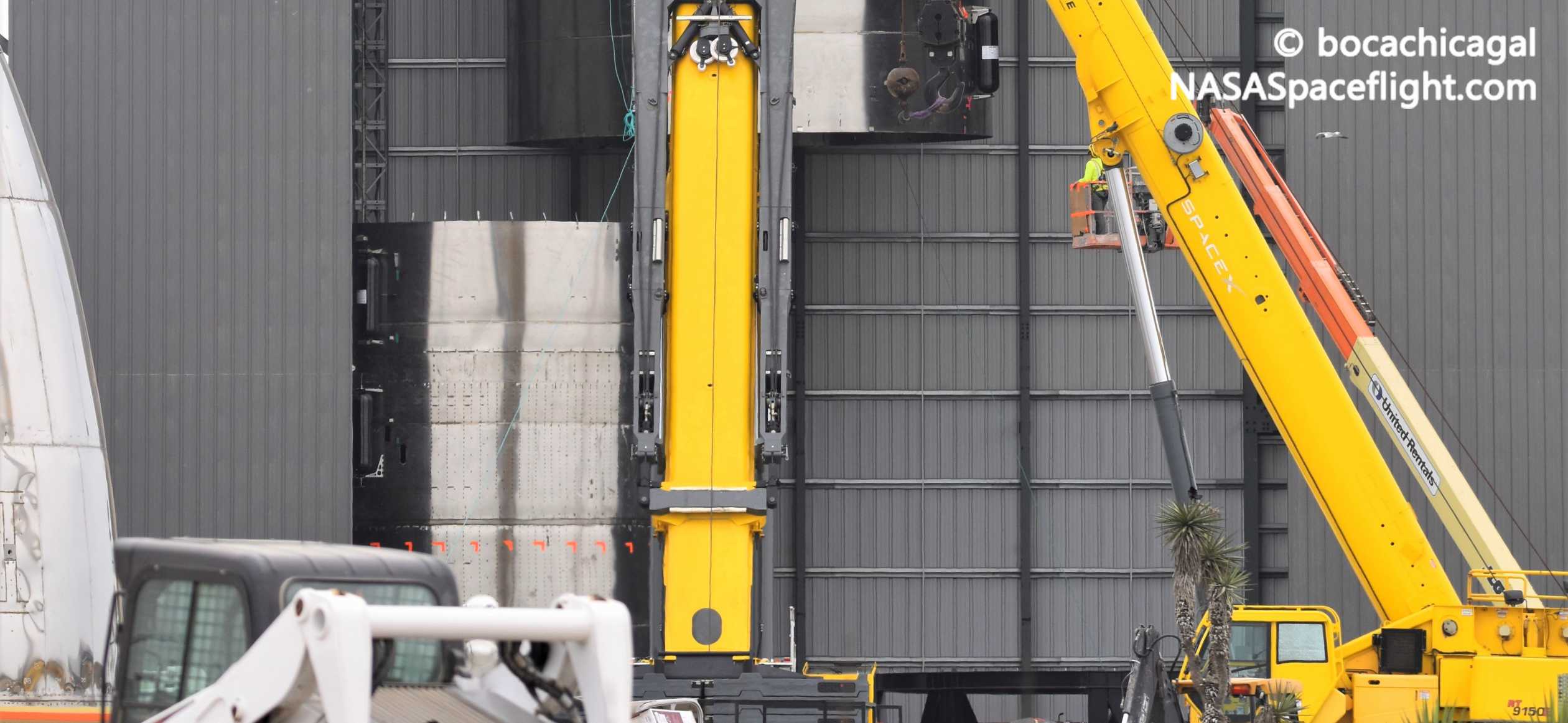
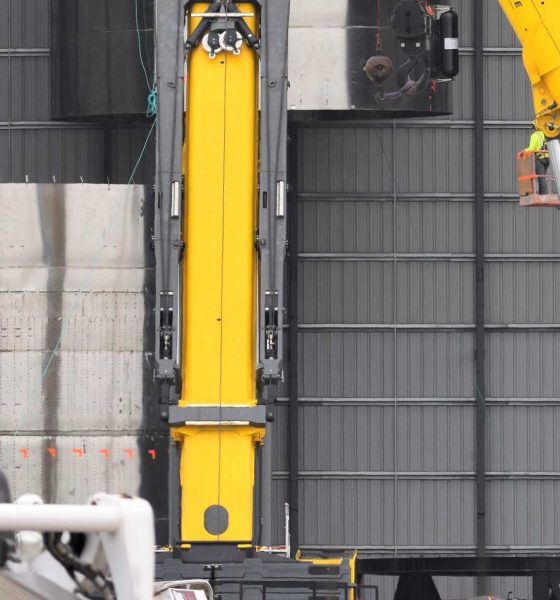
News
SpaceX Starship rocket could move to the launch pad today
SpaceX has finished stacking its fourth full-scale Starship prototype and public schedules show that the rocket could be moved to a nearby launch and test pad as early as April 20th.
Known as Starship serial number 4 (SN4), the rocket will be the third full-scale vehicle completed since the start of serial production, while Starship Mk1 – the first full-scale prototype – was built far more slowly and with different methods. Mk1 was destroyed during one of its first cryogenic liquid nitrogen ‘proof’ tests in November 2019, nearly nine months after assembly began in February. After Mk1’s failure, SpaceX spent about two months rapidly expanding and upgrading its Boca Chica, Texas Starship factory.
Around the end of January 2020, SpaceX kicked off the production of its first serial prototype – logically deemed SN1. Less than a month after its first steel rings were stacked and welded together, SpaceX transported the completed prototype to the launch pad. On February 28th, what CEO Elon Musk later described as a fault in its engine section “thrust puck” destroyed Starship SN1 during one of its first cryogenic proof tests. Barely a month later and after SN2 was modified into a “thrust puck” test tank and successfully tested, Starship SN3 rolled to the launch pad and was destroyed by operator and test design errors on April 3rd. Now, barely two weeks after SN3, Starship SN4 is about to begin testing.
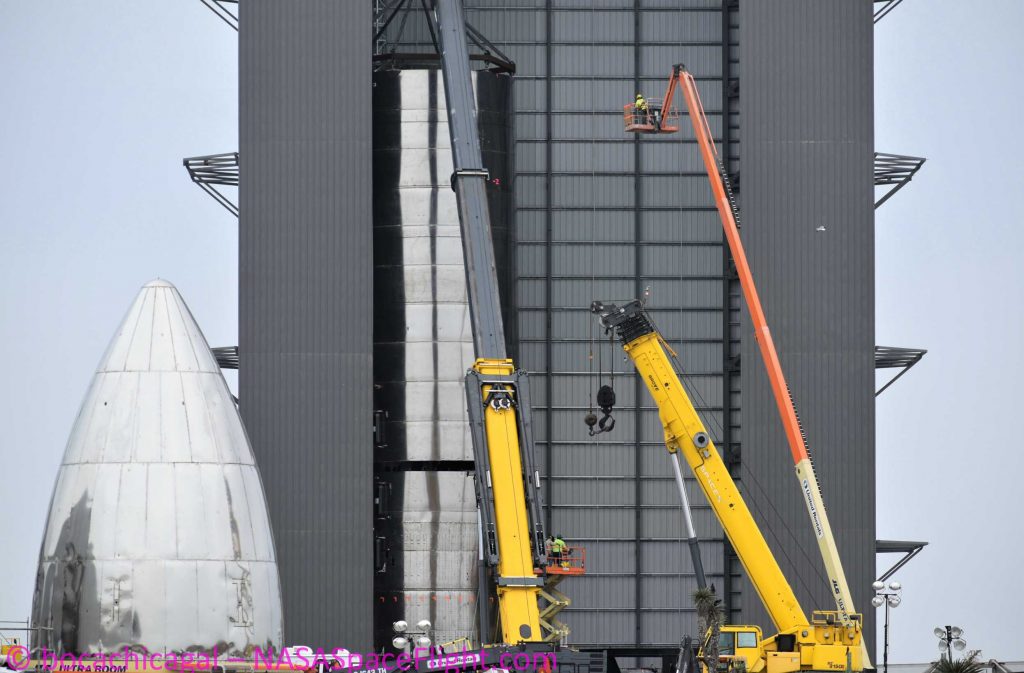
By all appearances, work on Starship SN4 began around March 23rd, continuing a production schedule that has been consistently completing a full-scale rocket prototype every four or so weeks. While SpaceX has taken the unprecedented step of reusing a section of a prototype (SN3) destroyed during testing, every other aspect of the rocket is new and built more or less from scratch.
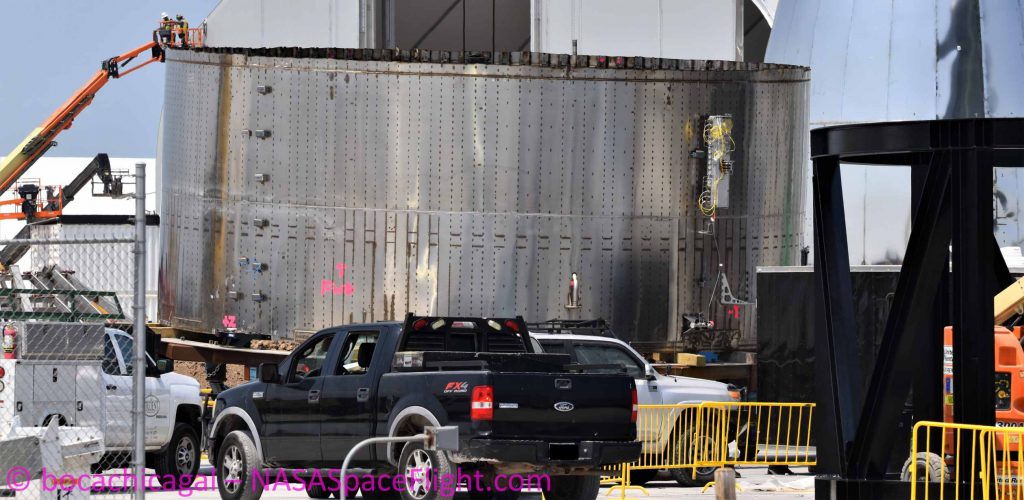
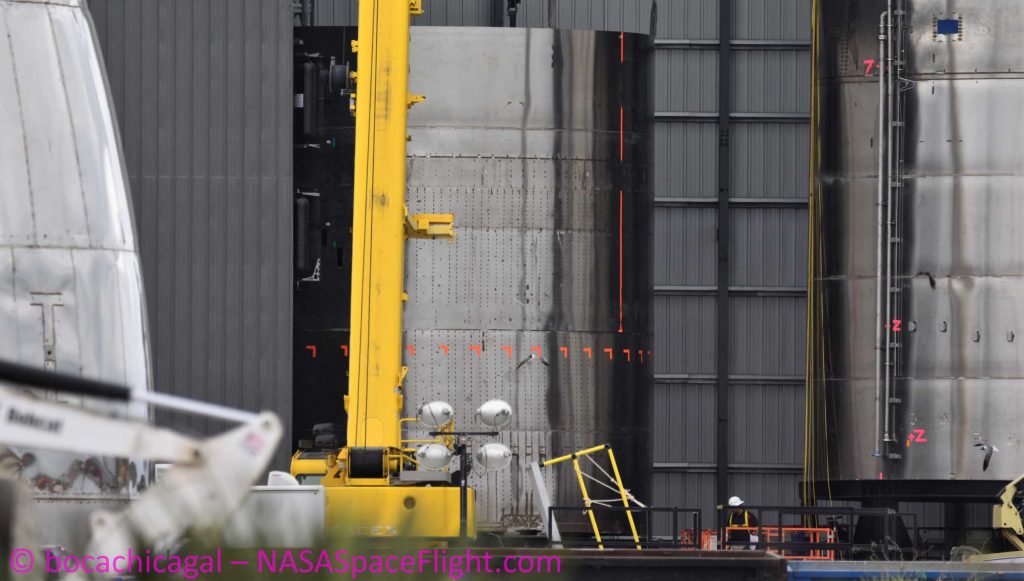
Just two days after Starship SN3’s salvaged skirt and SN4’s new engine section and aft liquid oxygen tank dome were stacked and welded together, SpaceX technicians attached a crane to the upper two-thirds of the rocket’s tank section and stacked it on top of the newly-finished engine section. 24 hours later, SpaceX teams have completed at least one circumferential seam weld, with a second soon to be finished.
Once that last weld is complete and passes inspections, Starship SN4 will be ready to be lifted onto a transporter and rolled down the road to SpaceX’s dedicated launch and test facilities. Of course, like SN3 and SN1 before it, SpaceX will likely still have a few days of work to get Starship SN4 ready for testing once it’s been moved to the pad.
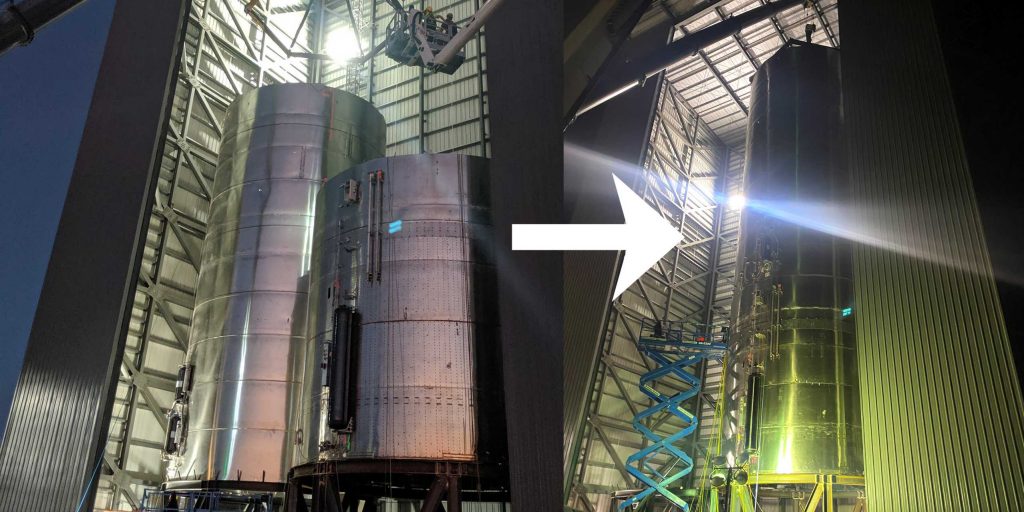
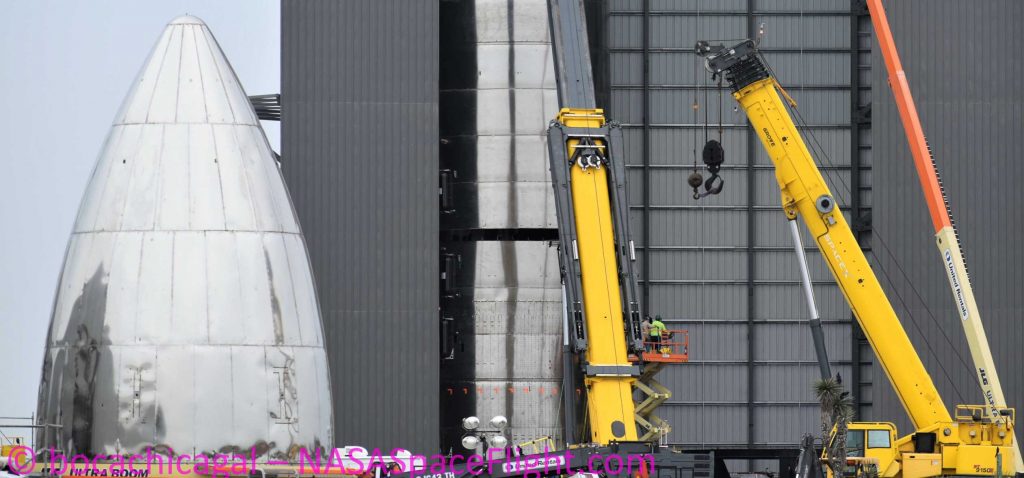
Using Starship SN3’s timeline, Starship SN4 could be transported to the pad as early as April 19th or 20th and ready for testing by April 24th or 25th. This meshes well with a publicly-available road closure schedule, required because SpaceX often needs to close a public highway for certain Starship transport and testing operations. Per Cameron County’s website, SpaceX has a transport-related closure planned on April 20th. The first testing-related closure begins on Sunday, April 26th and lasts from 9am to midnight, with backups on Monday and Tuesday.
As always, delays should come as no surprise with prototype testing, and schedules are always fluid and liable to change at any second. Regardless, it looks like Starship SN4 is perhaps just a week from its first round of testing.

Elon Musk
SpaceX issues statement on Starship V3 Booster 18 anomaly
The incident unfolded during gas-system pressure testing at the company’s Massey facility in Starbase, Texas.

SpaceX has issued an initial statement about Starship Booster 18’s anomaly early Friday. The incident unfolded during gas-system pressure testing at the company’s Massey facility in Starbase, Texas.
SpaceX’s initial comment
As per SpaceX in a post on its official account on social media platform X, Booster 18 was undergoing gas system pressure tests when the anomaly happened. Despite the nature of the incident, the company emphasized that no propellant was loaded, no engines were installed, and personnel were kept at a safe distance from the booster, resulting in zero injuries.
“Booster 18 suffered an anomaly during gas system pressure testing that we were conducting in advance of structural proof testing. No propellant was on the vehicle, and engines were not yet installed. The teams need time to investigate before we are confident of the cause. No one was injured as we maintain a safe distance for personnel during this type of testing. The site remains clear and we are working plans to safely reenter the site,” SpaceX wrote in its post on X.
Incident and aftermath
Livestream footage from LabPadre showed Booster 18’s lower half crumpling around the liquid oxygen tank area at approximately 4:04 a.m. CT. Subsequent images posted by on-site observers revealed extensive deformation across the booster’s lower structure. Needless to say, spaceflight observers have noted that Booster 18 would likely be a complete loss due to its anomaly.
Booster 18 had rolled out only a day earlier and was one of the first vehicles in the Starship V3 program. The V3 series incorporates structural reinforcements and reliability upgrades intended to prepare Starship for rapid-reuse testing and eventual tower-catch operations. Elon Musk has been optimistic about Starship V3, previously noting on X that the spacecraft might be able to complete initial missions to Mars.
Investor's Corner
Tesla analyst maintains $500 PT, says FSD drives better than humans now
The team also met with Tesla leaders for more than an hour to discuss autonomy, chip development, and upcoming deployment plans.
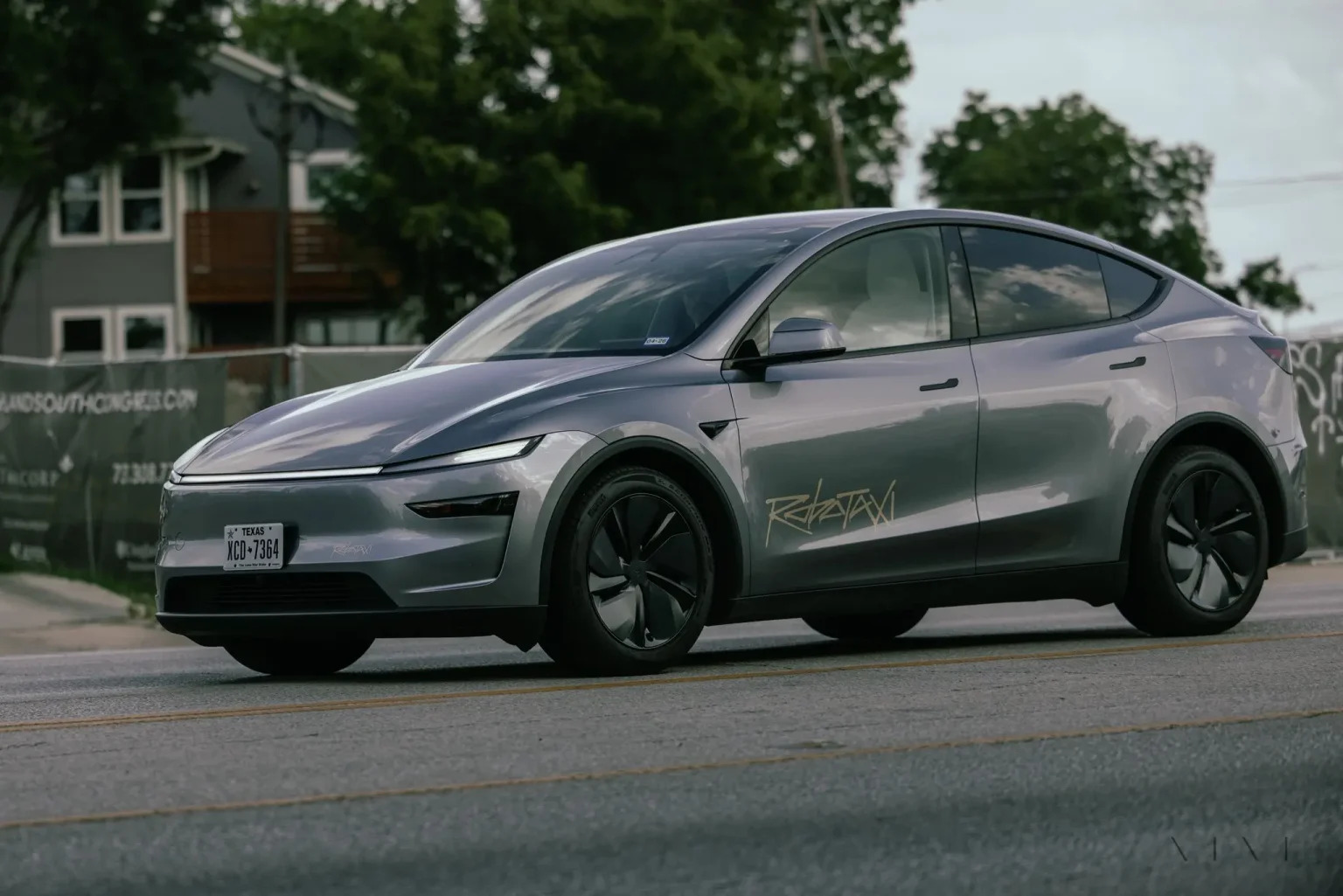
Tesla (NASDAQ:TSLA) received fresh support from Piper Sandler this week after analysts toured the Fremont Factory and tested the company’s latest Full Self-Driving software. The firm reaffirmed its $500 price target, stating that FSD V14 delivered a notably smooth robotaxi demonstration and may already perform at levels comparable to, if not better than, average human drivers.
The team also met with Tesla leaders for more than an hour to discuss autonomy, chip development, and upcoming deployment plans.
Analysts highlight autonomy progress
During more than 75 minutes of focused discussions, analysts reportedly focused on FSD v14’s updates. Piper Sandler’s team pointed to meaningful strides in perception, object handling, and overall ride smoothness during the robotaxi demo.
The visit also included discussions on updates to Tesla’s in-house chip initiatives, its Optimus program, and the growth of the company’s battery storage business. Analysts noted that Tesla continues refining cost structures and capital expenditure expectations, which are key elements in future margin recovery, as noted in a Yahoo Finance report.
Analyst Alexander Potter noted that “we think FSD is a truly impressive product that is (probably) already better at driving than the average American.” This conclusion was strengthened by what he described as a “flawless robotaxi ride to the hotel.”
Street targets diverge on TSLA
While Piper Sandler stands by its $500 target, it is not the highest estimate on the Street. Wedbush, for one, has a $600 per share price target for TSLA stock.
Other institutions have also weighed in on TSLA stock as of late. HSBC reiterated a Reduce rating with a $131 target, citing a gap between earnings fundamentals and the company’s market value. By contrast, TD Cowen maintained a Buy rating and a $509 target, pointing to strong autonomous driving demonstrations in Austin and the pace of software-driven improvements.
Stifel analysts also lifted their price target for Tesla to $508 per share over the company’s ongoing robotaxi and FSD programs.
Elon Musk
SpaceX Starship Version 3 booster crumples in early testing
Photos of the incident’s aftermath suggest that Booster 18 will likely be retired.
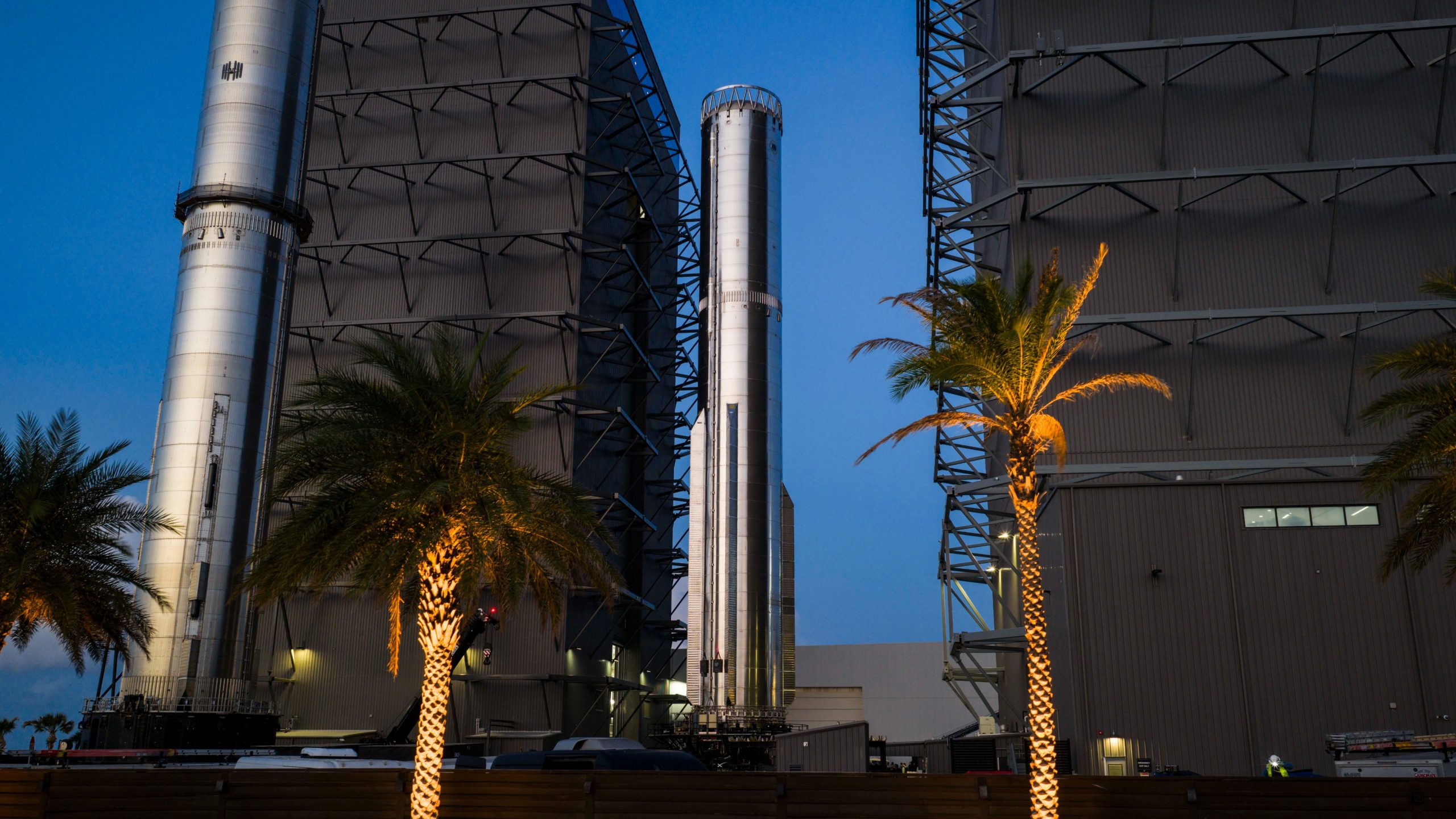
SpaceX’s new Starship first-stage booster, Booster 18, suffered major damage early Friday during its first round of testing in Starbase, Texas, just one day after rolling out of the factory.
Based on videos of the incident, the lower section of the rocket booster appeared to crumple during a pressurization test. Photos of the incident’s aftermath suggest that Booster 18 will likely be retired.
Booster test failure
SpaceX began structural and propellant-system verification tests on Booster 18 Thursday night at the Massey’s Test Site, only a few miles from Starbase’s production facilities, as noted in an Ars Technica report. At 4:04 a.m. CT on Friday, a livestream from LabPadre Space captured the booster’s lower half experiencing a sudden destructive event around its liquid oxygen tank section. Post-incident images, shared on X by @StarshipGazer, showed notable deformation in the booster’s lower structure.
Neither SpaceX nor Elon Musk had commented as of Friday morning, but the vehicle’s condition suggests it is likely a complete loss. This is quite unfortunate, as Booster 18 is already part of the Starship V3 program, which includes design fixes and upgrades intended to improve reliability. While SpaceX maintains a rather rapid Starship production line in Starbase, Booster 18 was generally expected to validate the improvements implemented in the V3 program.
Tight deadlines
SpaceX needs Starship boosters and upper stages to begin demonstrating rapid reuse, tower catches, and early operational Starlink missions over the next two years. More critically, NASA’s Artemis program depends on an on-orbit refueling test in the second half of 2026, a requirement for the vehicle’s expected crewed lunar landing around 2028.
While SpaceX is known for diagnosing failures quickly and returning to testing at unmatched speed, losing the newest-generation booster at the very start of its campaign highlights the immense challenge involved in scaling Starship into a reliable, high-cadence launch system. SpaceX, however, is known for getting things done quickly, so it would not be a surprise if the company manages to figure out what happened to Booster 18 in the near future.








